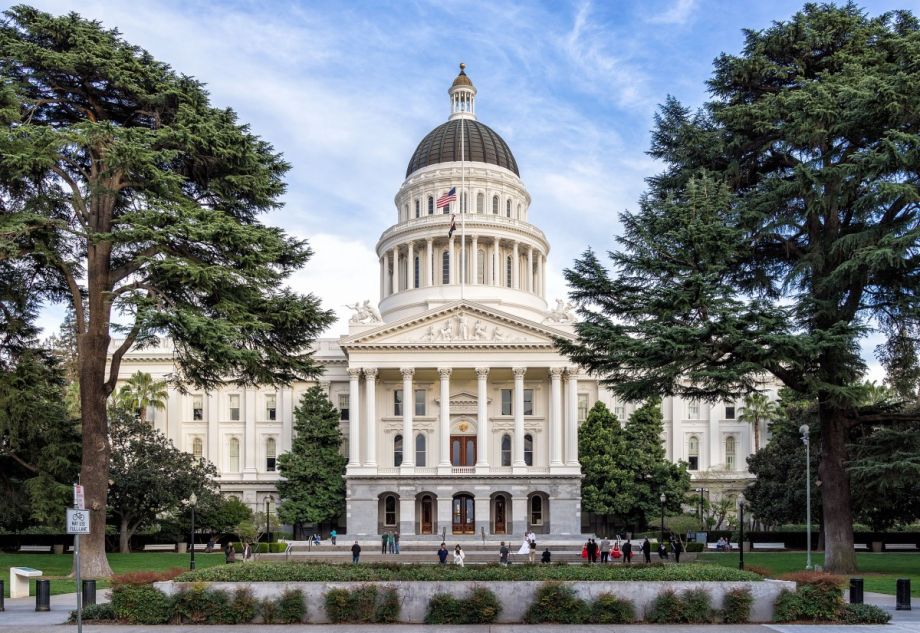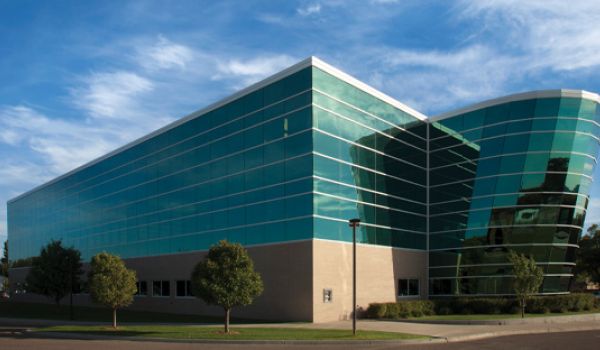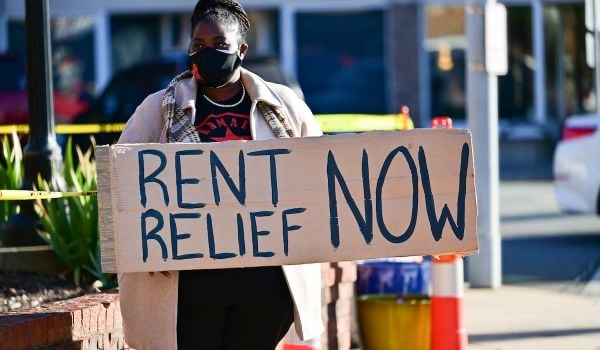When residents of Deep East Oakland are faced with eviction, they will have a few new faces to rely on — thanks to California climate policy that’s funding anti-displacement organizing in a number of cities. An Oakland initiative called Better Neighborhoods, Same Neighbors targets five square miles with support from a state grant funded through cap and trade dollars.
California’s cap and trade program was introduced in 2013. Companies that emit carbon beyond the state’s cap must purchase “allowances,” which the state auctions off. The policy generated $12.5 billion in the last decade. A 2016 state law mandated that 35% of this revenue must go to low-income or otherwise disadvantaged communities. This is managed through channels like “Transforming Climate Communities” (TCC).
TCC grants, a source of Better Neighborhoods’ funding in Oakland, are tied to anti-displacement work for a reason: “Green infrastructure” — whether specifically built to address the effects of climate change, like sea walls, or new parks and green space that mitigate problems like flooding — has had unforeseen consequences, among them higher real estate prices and potential displacement. According to the California Environmental Justice Alliance, which helped design the state’s grants, “Without effective anti-displacement policies in place, large-scale investments could push out local residents and small businesses as a result of increased property values.”
There’s a growing body of knowledge on the phenomenon of “climate gentrification,” where climate risk and green infrastructure can displace or exclude longtime low-income residents who are also the least insulated from the effects of climate change. A 2021 study showed that the 606 Trail, an elevated park in Chicago, led to higher home prices along neighboring blocks. TCC grants are the first to use “carbon taxes” to address these negative consequences.
Oakland’s Better Neighborhoods, Same Neighbors plan sets aside $846,000 over four years for the East Bay Permanent Real Estate Cooperative (EBPREC), a nonprofit that advocates for community-owned and decommodified housing models. The group used the money to hire three organizers in the past six months. In the past month, they helped three East Oakland residents who were in danger of displacement. Two are in unsafe housing, and one is facing foreclosure-based eviction. As of now they are all still in their homes.
“What’s really great is it’s been largely victorious so far,” says Scott Ortega-Nanos, one of EBPREC’s housing organizers. Ortega-Nanos says the organization was only focused on taking housing off the speculative market and not direct anti-eviction work, but then the TCC grants appeared. He says the work can be complementary, as ongoing eviction emergencies can make it hard for residents to imagine different housing models.
“It’s hard to get creative when you’re dealing with the basics,” he says.
The organizers are focused on six East Oakland neighborhoods that have been under-resourced compared to the city as a whole. East Oakland residents had an average median income of $39,600 compared with the city’s overall AMI of $51,400, according to 2016 American Community Survey data. Better Neighborhoods data shows that East Oakland residents have a life expectancy 10 years lower than the city as a whole and a poverty rate 10% higher.
The anti-displacement organizers at EBPREC have focused on people who are vulnerable to rising real estate prices and those who fall outside of Oakland’s existing eviction ban. While California’s pandemic-driven eviction ban has elapsed, Oakland still bans residential evictions for non-payment of rent, late fees, and rent increases not tied to inflation. EBPREC’s organizers are focused on people who fall through the cracks, including homeowners facing foreclosure-based evictions, which are not covered by Oakland’s ban.
“Some of the only evictions that are allowed are nuisance and foreclosure-based evictions, that in practice is what we’re seeing,” Ortega-Nanos says. There is also a concern about what will happen when the moratorium elapses.
In addition to direct anti-eviction work, EBPREC’s organizers engage in coalition-building around the larger movement of community-owned housing, which the organization considers long-term anti-displacement work.
“Very central to our mission is seeing land liberation, the liberation of property,” says Bee Coleman, another EBPREC organizer, “bringing this cooperative ownership model forward as one strategy towards anti-displacement,” Coleman says. The organization has a goal of contacting 14,000 people by the end of the Better Neighborhoods four-year grant cycle.
EBPREC’s organizers provide highly personalized support, akin to a counselor, including drafting letters and strategizing with residents who are avoiding displacement. While there are other resources available for people facing eviction, many do not have counselors on staff, Ortega-Nanos says. Many housing organizations have let go of counselors and others are spread thin, he says.
“There is another level of emotional labor and care I think that is absent,” he says. “Folks need a lot of personal touch, they feel overwhelmed.”
The Better Neighborhoods plan also contains a housing component, a 55-unit affordable housing complex where 25% of units are intended for people experiencing homelessness. The remaining units will be rented out to people making 20 to 50 percent of AMI. This $14.6 million project was conceived and partially funded prior to the arrival of the TCC grant. But because TCC grants require a 50 percent match from cities that apply, Oakland had to identify projects already underway that could be tied into funding, according to Marsha Murrington, a consultant for the city of Oakland who helped with the application.
Murrington says a Better Neighborhoods committee will track reductions of greenhouse gas emissions as well as the success of programs like EBPREC’s displacement avoidance effort. The city and community-based organizations are looking to find long-term funding, as the TCC grant will elapse after four years.
But Ortega-Nanos says the community has stepped up to support people facing displacement even without institutional support. “Regardless of the organizational support it seems that some residents have really started already to take charge and look out for their communities,” he says. The ongoing task, he says, is asking “how can we support that activity?”
This article is part of Backyard, a newsletter exploring scalable solutions to make housing fairer, more affordable and more environmentally sustainable. Subscribe to our weekly Backyard newsletter.

Roshan Abraham is Next City's housing correspondent and a former Equitable Cities fellow. He is based in Queens. Follow him on Twitter at @roshantone.


















